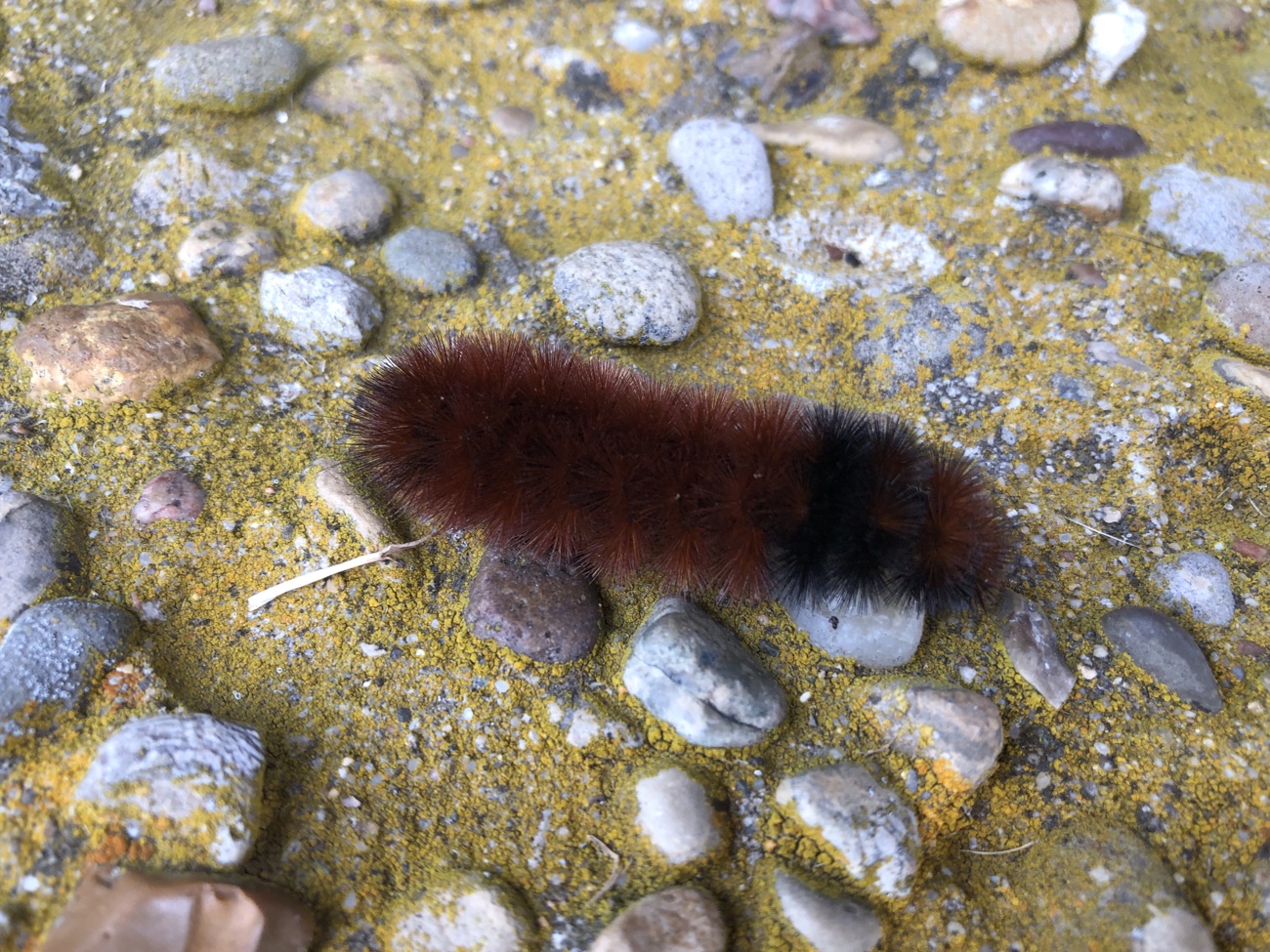
Not that kind of bear – a Woolly Bear caterpillar, the larval form of the Isabella Tiger Moth. The fast-moving orange and black fuzzies appear at this time of year, often crossing roadways. Legend has it that they can predict the severity of the coming winter, too!
You’ve heard the folklore about Woolly Bears, right? It goes like this: the prognosticating caterpillar’s bands of color foretell the severity of the upcoming winter. The more black there is, the harsher the winter will be; lots of orange and little black, for example, would forecast a mild and warm winter.
As with many legends, this one has not been scientifically proven to be accurate, as least in the way it’s traditionally been applied. Check out the University of Massachusetts scientists’ conclusions (from Purdue Extension, excerpted, bolding added) below that supports a different way of looking at what the woolly bears are telling us:
Entomologists at the University of Massachusetts…have also discredited the prediction theory, but they say hang on a minute: There could, in fact, be a link between winter severity and the orange band width of a woolly bear caterpillar. They point to their own evidence that the number of orange versus black hairs on a woolly bear has to do with the age of the caterpillar. In other words, the longer the caterpillar lives, the more orange hairs it will have. The length of time a caterpillar spends as a caterpillar depends upon how soon it began feeding in the spring. The more orange, the longer the caterpillar has been feeding. So their conclusion is this: Band width does say something about a late cold winter or an early warm spring. However, it’s telling you about the previous year, not the coming year. Wide orange bands simply mean the caterpillars went through a warmer winter than those with narrow orange bands.
And based on the woolly bear in my photo, it’s recounting what occurred last winter very accurately: it was a very mild winter until the end, when the frigid temperatures and snow arrived for a short period – and the caterpillar has very little black, except for the narrow band near its head.
Here’s an amazing fact about this fuzzy creature from the Farmers’ Almanac: “woolly bears produce a kind of antifreeze that protects their organs and other soft tissues while the rest of the caterpillar freezes solid over the winter. Because of this, they can survive temperatures as low as -90 degrees Fahrenheit”. A Miami University study showed that -80 degrees Fahrenheit was the threshold for lethality, but still…wow!
Our woolly bear quickly disappeared among the leaves, no doubt looking for a cozy spot to (freeze, if it gets cold enough) and spend the winter. I think (based partly on what we’ve already seen, so it feels a little like cheating) that this winter will be colder than last year’s. What do you think?
